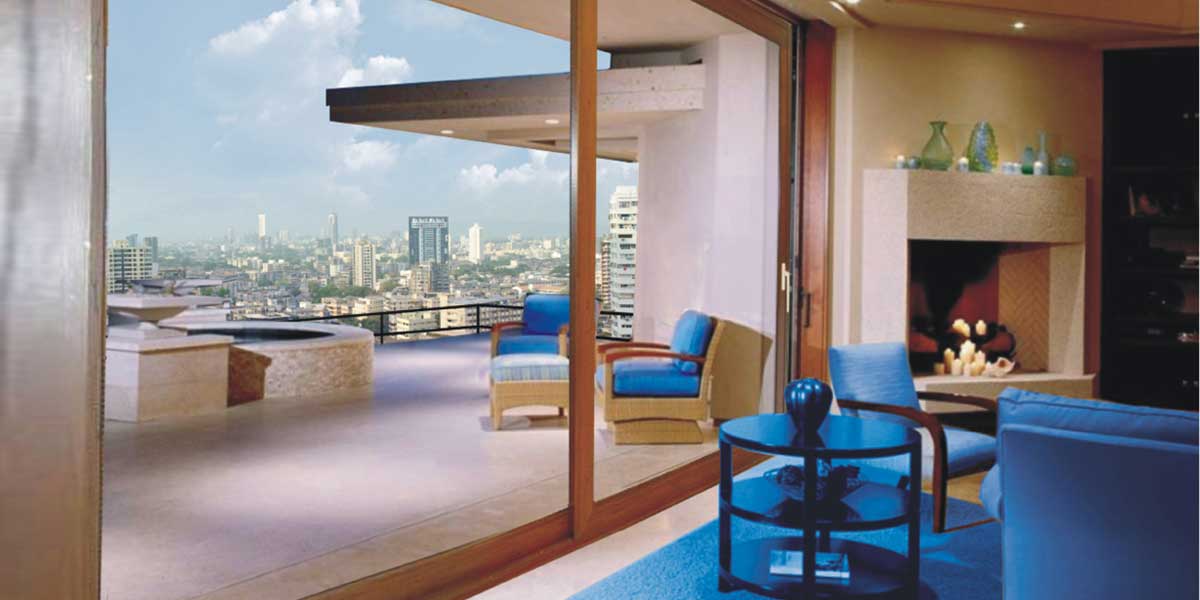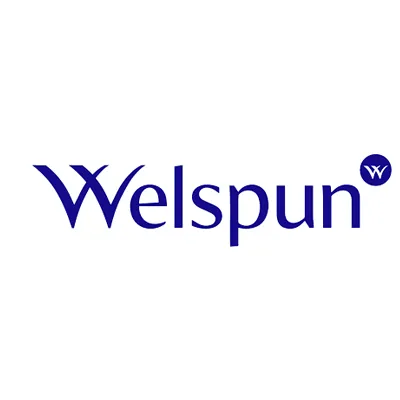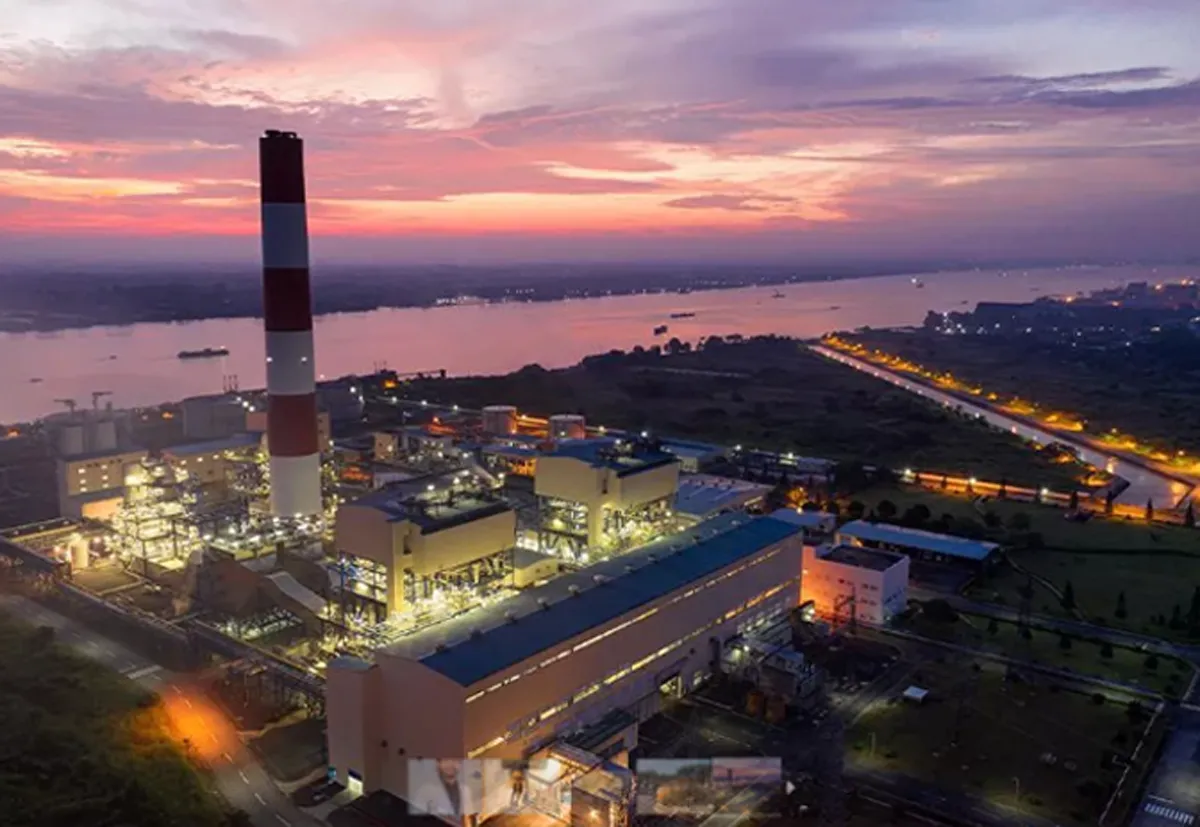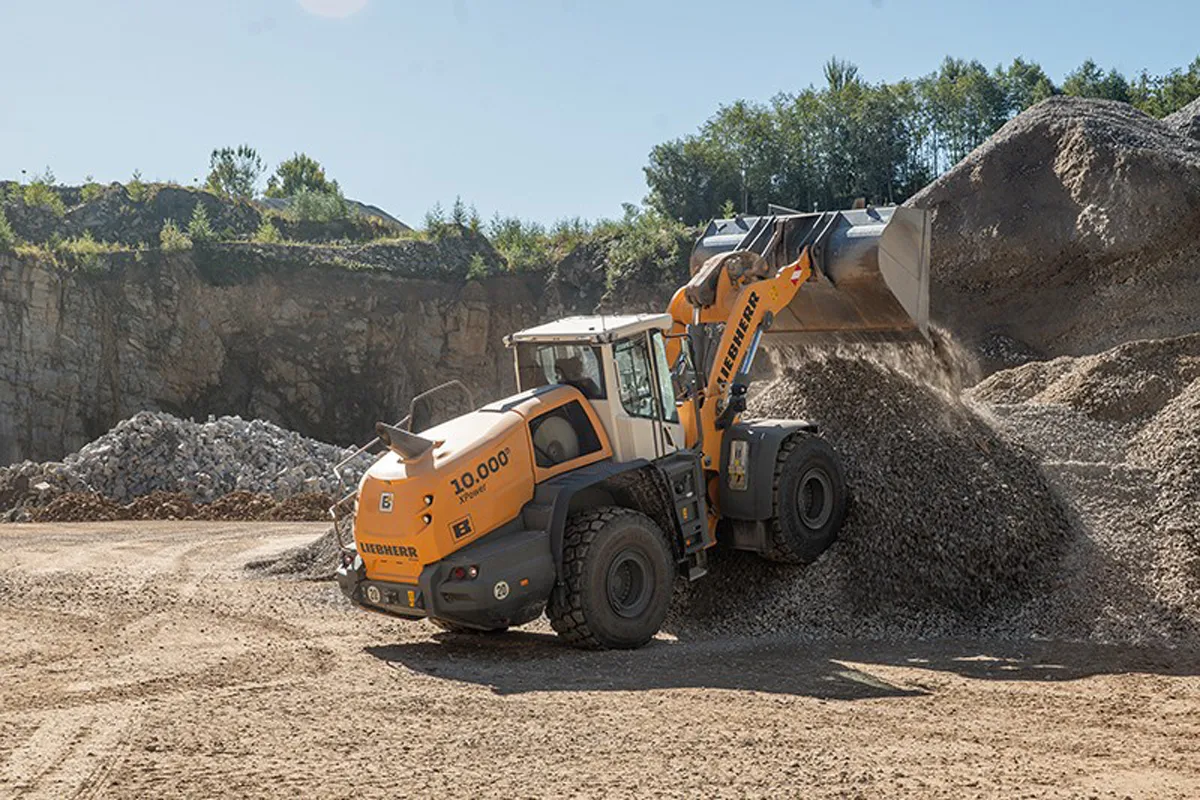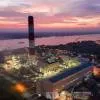Never before in recent history has the world waited for a year with so much hope. 2020 was the year of COVID-19, but what about 2021? Will the pandemic continue to impact the economy? What about demand for building materials? CW asked leaders across segments and, interestingly, found that the pandemic has shaped some demand trends, some of which may last well into the New Year. Over to our respondents:
Fenestrations
“Business is currently close to our pre-COVID volumes with a lot of repeat orders from existing customers,” reports Saket Jain, Business Head, Fenesta. In the new normal, he expects greater awareness of hygiene to drive demand for premium, sensor-based touch-free doors and other fixtures in commercial spaces. In homes, demand is growing for life-sized sliding doors with threshold sliders that offer unhindered access without taking up much space and a panoramic view of the surrounding landscape that enhances the spaciousness of the room.
Sangitaa Ahluwalia, Brand Manager, Durian Industries, believes wooden doors are the safest option, especially by applying a specially formulated antimicrobial coating like Covicoat. At Durian, work is underway to create doors that will serve as sanitisation stations by having a niche to hold a sanitisation product or using sensors for the purpose, she shares. “Hands-free and foot-operated doors may also become more popular. We are stepping up from being a provider of mass solutions to offer premium doors.”
In future, larger windows will garner attention for offering natural light and ventilation and an outdoor view, desirable as people are spending more time at home, says Jain. Casement windows are expected to gain popularity for ensuring maximum ventilation, high insulation against noise, protection against dust and outdoor pollutants, and allowing the expulsion of indoor air by controlling drafts.
As ideas like urban farming and gardening catch on to cater to people’s need for beautiful and healthy places to live and work in (and school in and play in), Ahluwalia expects architects to increasingly incorporate biophilic concepts in building designs. She expects green areas to be created outside fenestrations, in balconies and on rooftops and terraces, which will increase demand for products such as French doors and windows.
Commercial and institutional buildings will seek energy-efficient windows and doors fitted with double or triple sealing and insulated glass, like Fenesta’s ranges.
Sanitaryware
There has been an increased interest in homes over the past few months, where they have become the new sanctuary, and consumers are willing to invest, especially in hygiene and wellness, observes Salil Sadanandan, President, Kohler (K&B), South Asia, Middle East and Sub-Saharan Africa. “Kohler India has witnessed 5X growth in demand for touchless sensor faucets since March 2020 and increased demand for cleansing bidet seats offering unmatched convenience and hands-free hygiene. Sales of coloured sanitaryware and faucets have skyrocketed. Customers are enquiring about Numi, Kohler’s most advanced toilet and winner of the Consumer Electronic Show (CES®) 2020 Innovation Award.”
“People are also looking for wellbeing-enhancing products such as those that help incorporate steam inhalation in daily routines,” he adds. Kohler India’s steam generators range fulfils this need by providing a private steam bath in just 60 seconds, at the press of a button. Going forward, Sadanandan expects good retail growth from greater numbers of families moving from apartments to individual houses or upgrading their sanitaryware.
Atul Sanghvi, Executive Director & CEO, CERA, expects greater awareness of health and hygiene to drive the renovation of bathrooms in residences. “Customers will look for branded, water-saving, feature-rich products like rimless WCs, anti-bacterial seat covers, etc.” In commercial and institutional buildings, he expects the greater use of sensor-activated, touch-free products, as well as water and energy-saving products.
CERA’s newly researched and launched products to cater to these emerging customer needs include rimless wall-hung WCs, anti-bacterial seat covers, sensor-activated touch-free faucets and low-cost, foot-operated faucets for public areas.
Paints and coatings
COVID-19 had an impact on both the architectural and industrial paints and coatings sector, according to Anuj Jain, Executive Director, Kansai Nerolac Paints. However, as painting is largely associated with the disinfection and sanitisation of spaces, and consumers have become hygiene and immunity-conscious, paint has gained relevance.
Since the unlock, demand for paint for home renovation has picked up, especially for paints with functional, anti-bacterial, anti-dust, humidity-absorbing, temperature-reducing properties, and for safe products, says Jain. He expects this demand to persist.
Geographically, Jain observes that business is back to pre-COVID levels in small towns but consumers are still reluctant to allow painters to enter their homes in metros and other big cities. Commercial and institutional businesses in large cities are also yet to completely pick up.
“Demand is coming back to pre-COVID levels pan-India, mainly on the back of the resumption of work on construction sites that had earlier shut shop, but the award of contracts for new projects is still slow,” observes Himanshu Kapadia, CEO, Construction Chemicals (Large User Business & Services), Pidilite Industries. He expects private-sector investments in residential and commercial activities and growth in institutional and infrastructure activities to lag behind the previous year.
On construction sites, Kapadia expects the need to speed up work to ensure early completion to spur the adoption of mechanised methods and quick-to-apply coatings. For instance, Pidilite’s Superseal 4500 polyurea-based waterproofing coating can be applied on 1,000-2,000 sq m of surface in a day with one machine and four crew members. Whereas brick bat Coba waterproofing the same surface would take a week to complete, at the daily rate of 100-200 sq m, and employ 10-15 people. Simply deploying waterproofing coatings across the industry would save over 70 million man days annually.
To cater to emerging demand, Kansai Nerolac Paints has developed two breakthrough products. India’s first anti-viral paint Excel Virus Guard, an interior emulsion paint with active anti-viral and anti-microbial properties, repels 99.9 per cent of germs and reduces humidity and odour. And Beauty Gold Washable is a versatile product offering excellent washability, a sheen finish and anti-bacterial properties especially for households with children.
Pidilite’s affiliate company, Cipy Polyurethanes has recently developed an antivirus coating, Aqua AM, which is 99.98 per cent effective on glass, plastic, wood or metal and resists bacteria as well. As it is water-based (unlike typical acrylic-based wall coatings), it stays intact even if sanitisers and disinfectants are sprayed on the surface.
Tiles
Domestic demand has charted a staggered recovery after the lockdown, touching 70 per cent of pre-pandemic levels in the past two months, mostly driven by demand to finish open projects as retail footfalls are still low, according to Subrata Basu, Vice-President Marketing, Nitco.
Interestingly, he shares that exports kept Nitco going through the pandemic, recording more than 30 per cent growth, largely as a result of extended anti-dumping duties on Chinese products globally and Nitco’s foray into the premium US tile market.
Coming to demand trends, “globally, tiles are increasingly being used for kitchen tops and outdoors, replacing natural stone also in exterior panels,” observes Basu. “As India is a cost-driven market, this is not yet a large trend here. However, India is seeing greater demand for larger (4-8 ft) tiles. Rural India has a wider colour and patterns palette and a preference for glossy surfaces. Urban India prefers muted designs and wood, stone and marble finishes.” In future, he expects government infrastructure projects such as airports, metros, hospitals and warehouses to contribute to demand for industrial tiles with specific technical properties while the private B2B sector goes slow.
As ceramic is an easily maintained and hygienic material, Dinesh Vyas, Marketing Head, H&R Johnson India Division, Prism Johnson, expects to see it cover more building surfaces—floors as well as walls.
Tile buyers look for durability, aesthetics (typically large tiles that create seamless surfaces) and better and innovative functional attributes such as, now, the hygiene quotient, he elaobrates. “Research-based manufactures have focused on hygiene to create unique features, such as H&R Johnson India’s patented, inorganic anti-microbial (and anti-viral) compound and process to make anti-microbial tiles and sanitaryware.”
As different technologies are available at a price to everyone in the Indian tile industry, hygiene-friendly tiles may become more widely available. Vyas also sees a huge opportunity for tiles customised for individual projects.
Nitco’s new products include a global range for premium customers, a Made in Italy range and a distinct range for the urban minimalist.
Glass
New building launches have reduced sharply; however, we are seeing greater interest in order finalisations and increased site demand for under-construction buildings that need to be completed and handed over to end-users, observes Tariq Kachwala, Director, FG Glass Industries. He expects demand to normalise by Q2 or Q3 of FY22.
The current positive is that reputed developers are holding on to premium façade products, in particular high-performance silver-coated glass (single, double and even triple-layered) that allows sunlight to pass through while keeping out heat, he adds. “We haven’t seen a sharp dilution of product specifications so far. Affordable and mid-segment projects mostly make use of monolithic clear, tinted or solar-control glass. Our specialty range extends to a combination of laminated and insulated glass for enhanced thermal comfort and safety, as well as fire-rated glazing and security solutions like bullet and burglar-resistant glazing.”
Rajiv Balaggan, Sales Head, Architectural Glass India, Pilkington, expects growth in the demand for Pilkington SaniTise™, a new glass from the NSG Group coated with a layer of titanium dioxide (TiO2), a substance that has been shown to be effective against a wide range of microorganisms including bacteria, viruses and fungi. “Essentially, when the coating is exposed to ultraviolet light, it produces radicals that break down these microorganisms. That way, it keeps the surface clean. This is the photocatalytic effect of titanium dioxide. I expect Pilkington SaniTise™ to be used mostly by premium developments, as a standalone glass or a part of double-glazed units.”
Façades
In the post-pandemic world, the emphasis is on health, whether in homes or offices, says Muthu Kumaran, Deputy General Manager, Head – Façade & Roof Division, New Market Development, Wienerberger India. Consequently, he expects sustainability and wellness to become the key themes of aspirational buildings that are ready for the ‘new normal’, also for their façade design and materials.
Pratik Doshi, National Manages, Facades, Schueco, expects a shift in the outlook on the fabrication and assembly of building components onsite to boost preference for products that help maintain a healthier onsite environment. For instance, demand for high-quality unitised façade systems will increase because these are fabricated in a contained, climate-controlled environment. Also, they can be quickly installed.
To spur the usage of unitised façades beyond the traditional large fabricators and construction companies, Schueco has come up with TropTec high-performance unitised facades for India, which are easy to fabricate and can hence be used by medium to small fabricators. Besides the systems, the company additionally offers accessories, fabrication training, software assistance and on-site interventions. “Consequently, tested and certified systems from Schueco are being widely accepted in India,” adds Doshi. “We see a noticeable shift towards systems companies compared to local assorted solutions.”
A notable, although gradual, change in building architecture is closer attention to look and feel and higher spending on heat insulation and health-promoting materials, shares Kumaran. Next, he expects designers and customers to prefer sustainable products that complement climatic conditions and reduce glare, heat and acoustic disturbances.
In the overall scheme of things, the façade is one of the most significant contributors to energy consumption, adds Kumaran. “So, proponents of high-performance, green design believe it is high time to move away from the conventional ‘all that glitters’ façade formats mostly visible in high-rise, high-design buildings.”
While areas classified as ‘vision’ need glass for natural light to penetrate, Kumaran proposes the use of a wide array of clay façade materials for ‘non-vision’ areas. “A correctly executed façade cladding with clay-ventilated façade tiles is an excellent heat insulator,” he explains. “Ceramic has mass, which lends it a high heat-buffering capacity useful for both winters and summers.”
Pipes and fittings
With the increase in the price of PVC pipes as a result of raw material supply-chain disruptions owing to the pandemic, buyers are turning to less expensive polyurethane and PEX pipes, according to Chintan Daiya, Partner & Director, D’Plumbing Consultants. “Where price is not a limiting factor, buyers are considering metal and composite pipes as an option, too, for health reasons.”
“As pipes are an essential product, we have been affected relatively less than other segments and expect this adverse impact to last for a shorter duration,” acknowledges GS Dikondawar, Senior General Manager (Innovation & Technology), Supreme Industries. In future, he expects the development of water management, health and sanitation infrastructure to play an important role in transforming India into a global manufacturing hub. Many Indians lack this access and the ongoing pandemic has only further worsened the situation and highlighted the gap in provisioning safe and clean water and safe disposal of wastewater. To meet this need, Supreme Industries is committed to provide advanced piping solutions at an affordable cost.
Further, Dikondawar expects ambitious government projects such as 24x7 metered water supply, har ghar nal, sanitation for all, housing for all by 2022 and smart city projects to boost demand for piping and new applications like fire-protection systems, rainwater harvesting systems, sewage treatment and piped gas supply.
Pre-engineered buildings
Swiftness in enabling adequate infrastructure with optimised usage and performance in times of distress, like a pandemic, flood or cyclone, is extremely critical, observes Puneet Mathur, Business Head, Tata BlueScope Steel Building Solutions Division, pointing out that the ongoing pandemic has served as an alarm for communities and nations to be ever-ready.
In this context, this year, Mathur shares that demand has surged for factory-built, modular and rapidly deployable emergency buildings or pre-engineered steel structures that have empowered communities to respond faster. “Our solutions have contributed towards several progressive segments such as warehousing, strengthening emerging organised retail, FMCG, e-commerce and pharma.”
Sectors facing a serious shortage of manpower are looking at pre-engineered building construction as it employs less onsite labour, observes D Raju, Managing Director, Kirby Building Systems & Structures India. “The other positive is the greater number of pre-engineered building tenders by the private, public and government sectors for affordable housing, airport buildings, e-commerce company warehouses, etc.”
That said, Raju believes the adverse impact of the lockdown is lingering because new orders from the manufacturing sector, which depend on companies reaching maximum capacity utilisation and opting to expand based on increased demand, are yet to materialise. Also, some industry decisions that would boost demand are being postponed.
Tata BlueScope Steel’s Building Solutions vertical offers pre-engineered buildings that range from heavy to light structures, depending on emergency response levels: immediate, mid-term or long-term. “We can address the immediate response through a temporary modular solution, the EZYBUILD® CovKill, deployable as isolation and quarantine units,” says Mathur. “This does not need a heavy-duty crane and material handling equipment to assemble and dismantle. Our mid to long-term solutions include ECOBUILD® and BUTLER® steel building solutions with which one can move from temporary structures to a more robust framework.”
Kirby India has constructed high-rise (G+20 floors) commercial buildings either completely in steel or in a composite form. However, Raju expects the wider adoption of pre-engineered buildings by the residential segment to take more time. A major change in the short term is unlikely as only some sectors are likely to witness positive growth.
In future, Mathur sees prefabrication being deployed for high-rise buildings such as commercial spaces, hospitals, hostels and multilevel parking for its advantages over conventional construction.
Steel
In Q1 of the ongoing fiscal, the peak of the lockdown, Jindal Steel & Power hit its “highest quarterly production in three decades,” reveals VR Sharma, Managing Director, Jindal Power & Steel. “We went on to touch 3.5 million tonne production in the first half of this fiscal.” This achievement followed a switch of focus from the domestic to the international market, at a time when some steel companies scaled down production or closed some of their plants.
“We supplied to Europe when it was in the grip of the pandemic and steel mills in Italy, Denmark, France, Germany and other western European nations were not doing well, and steel traders were hungry for material,” he shares. “We supplied to the Middle East (Saudi Arabia, Kuwait, Oman, UAE), which used to depend on steel from China, which was out of the market at the time. We tapped demand from Southeast Asian countries such as the Philippines, Indonesia and Malaysia. Finally, we knocked on China’s doors. We had never thought an Indian company would be competitive enough to enter China but, over negotiations, we found they were happy with our prices and commitment, and got orders for 1.2 million tonne. We serviced China for four months from April to July.”
Starting August 2020, Jindal Steel & Power tapered off exports, from 78-80 per cent exports in Q1 to 38 per cent in Q2, and now 5 per cent.
Sharma expected infrastructure to come back faster. “What would help is restarting the railways; of 18,700 trains, only 2,000 are running. When the remaining 16,000 trains are on the tracks, the movement of people will resume and activity on halted construction projects will resume.” In terms of upcoming opportunities, he cites rail and metro projects that use the rails produced by Jindal Steels, speciality rails, hardened rails, 1018 grade rails that were earlier being imported, which the company now produces under Atmanirbhar Bharat.
Other markets are transmission towers for the Power Grid Corporation and pipes for the Pey Jal Yojna. “Water pipelines are being laid from the Godavari basins to different states (Chennai, Bengaluru) and so on,” he says. “We also produce rebars or construction steel, 550 grade, a big hit in the market, which other companies only produce on demand.”
Cement
Since the lockdown has been lifted, demand has picked up steam for cement for the rural housing segment and infrastructure, led by government projects, according to Pramesh Arya, Executive Director and Head of Marketing, Dalmia Cement. “Government announcements on rural housing and public works will help boost demand further.” Geographically, Eastern India has continued to outperform and there are green-shoots visible in the South, he observes.
“Stable cement prices in the past few months have worked well for the sector,” remarks AV Dharmakrishnan, Chief Executive Officer, The Ramco Cements Ltd. “In the instance of Ramco Cements, so have cost control measures and relentless marketing efforts to develop niche trade markets for premium products.” Consequently, the company registered its highest-ever net profit (profit after tax up 40 per cent) during the September quarter of this fiscal, best-ever EBITDA (up 48 per cent) and EBITDA per tonne despite a 19 per cent drop in sales from 27.24 lakh tonne to 22.13 lakh tonne—the impact of the pandemic and unusually heavy rains in South India.
In terms of products, Arya expects organised and large customers, who are mandated to follow government regulations and more aware of environmental issues, to adopt environment-friendly products, such as blended cements like PSC and composite cement. Overall, he expects the B2B segment to increase at a faster rate than the retail market owing to rapid urbanisation. That said, growing awareness in the retail market will drive demand in segments such as specialised cement products for roof, wall and floor construction.
“In the long run, depleting fossil fuel reserves, the scarcity of raw materials and growing environmental concerns will force the market to shift from conventional cement types to modern cements like LC3 or polymer-based cements, which are still under development and yet to be commercialised in India,” adds Arya.
Dharmakrishnan expects demand to pick up, especially for PPC brands that are doing well such as Ramco Supergrade (the company’s flagship product seen as a value-for-money cement) and Ramco Supercrete (for its technical advantages).
Blocks
Demand is normalising for quality block suppliers after the peak of the pandemic, shares Manoj Rastogi, CEO, Concrete Products Division, Sobha. “As labour is now available, demand is likely to continue for projects, except for multi-storied apartment buildings that demand a different construction methodology. Blocks provide flexibility to control the pace of construction even though this use is labour-intensive.”
Anup Mathew, SVP and Business Head, Godrej Construction, expects demand for AAC blocks (and other key building materials such as cement, ready-mix concrete, etc) to increase in coming quarters as both ongoing and new developments especially across Mumbai, MMR and Pune progress towards completion. He sees the infrastructure domain as a critical area of growth.
Demand for AAC blocks will be driven by their advantages: light weight (as against conventional clay bricks or concrete blocks), better thermal insulation and low density (hence lowering the structural dead load and favourably impacting the consumption of concrete and steel in a building).
Mathew expects recycled concrete blocks and pavers to be used for non-structural concrete precast products and elements. “These recycled concrete products from the fully automated manufacturing plant in Mumbai are comparable in durability and strength with concrete products made using virgin aggregates.”
- CHARU BAHRI
